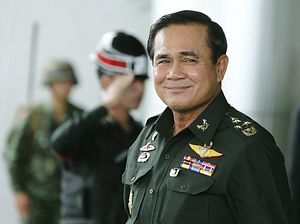Last week, the Thai government announced new defense budget figures for the 2019 fiscal year. Though the headlines following the announcement indicated that another major increase had occurred, that hike in fact obscures the significant challenges and issues still confronting the Thai military and government with respect to its broader defense modernization plans.
As I have noted before in these pages, over the past decade or so, Thailand has had one of Southeast Asia’s highest levels of defense spending but has generally lagged behind the regional average percentage-wise in terms of government expenditures and GDP. And while military coups in Thailand tend to see boosts in the defense budget, the military junta which came to power in May 2014 has been able to get some increases but not nearly to the level expected due to a range of factors including the country’s economic underperformance and related domestic scrutiny (See: ‘The Truth About Thailand’s 2017 Defense Budget Hike“).
On June 7, the Thai government announced the defense budget figures for the 2019 fiscal year, with the budget set for just over 227 billion Thai baht (just over $7 billion), as well as a reported additional $3 billion for security spending for a range of internal threats. Though the headlines suggested that this was indicative of a large increase, the hike is significant but still largely consistent in many ways with what we have seen over the past few years.
At the most basic level, the amount itself certainly represents another consecutive round of significant increase in defense spending under the junta government. It is a 4.2 percent rise over defense spending figures from 2018, coming after an increase during the previous year of around 5 percent. The 2017 defense budget prior to that had seen a much more modest increase of around 2 percent.
But the significant increase still puts figures at around the same levels in terms of government spending and percentage of GDP, which is still much lower than where defense planners would like those figures to be. The budget is about 7.6 percent of government spending and 1.4 percent of GDP, which generally tracks with similar figures in previous years on both counts.
Of the two figures, the percentage of GDP figure is especially notable in terms of a relative comparison for where the country is and where the government would like it to be. Though the junta’s modernization plan for the armed forces, dubbed Vision 2026 and green lighted last year, mentions a target of 2 percent of GDP on defense over the next few years, the recent budget reinforces the reality that the country continues to struggle with even getting past 1.5 percent of GDP, not unlike some other neighboring Southeast Asian states.
Of course, it is important to reinforce the point that a focus on aggregate defense budgets alone tells us very little about where the country is heading on defense and security in the years to come. Indeed, delving into many of the significant trends we have seen in Thai defense policy in recent years that I have been writing about in these pages – from shifts in the composition of key defense partners to the emphasis on building up the defense industry to the balance between a range of internal and external threats – will require much deeper dives beyond annually issued digits that drive periodic headlines (See: “What’s Next for China-Thailand Military Ties?“).






























